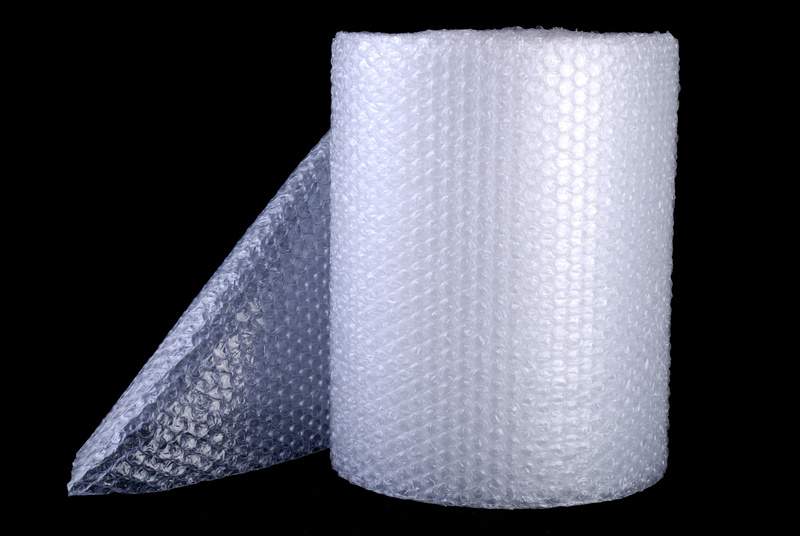Safeguard Your Sofa: Long-Term Tips from Experts
Posted on 17/05/2025
Safeguard Your Sofa: Long-Term Tips from Experts
Your sofa is likely the centerpiece of your living space, offering both comfort and style. However, keeping it in pristine condition for years requires more than just occasional cleaning. Whether you've invested in a luxurious leather couch or a cozy fabric sectional, understanding how to safeguard your sofa ensures lasting beauty and comfort. In this article, we'll share expert insights and actionable tips to help you preserve and protect your beloved seating arrangement for the long haul. Read on to discover comprehensive, easy-to-follow strategies for long-term sofa care!

Why Long-Term Sofa Care Matters
Certain pieces of furniture receive more use and wear than others -- and sofas top the list. Kids, pets, guests, and the whole family spend hours lounging, napping, and relaxing there. Thus, practicing proactive sofa protection is essential not just for appearance but also for comfort and hygiene.
- Enhances durability and longevity
- Prevents costly repairs or replacements
- Keeps your sofa hygienic and allergen-free
- Retains aesthetic value for a welcoming home
- Maintains high resale value and appeal
By following the advice below, you'll keep your sofa in exceptional condition year after year.
1. Choose the Right Sofa for Your Lifestyle
Before delving into protective measures, the very first step in safeguarding your couch starts with selection. Consider factors like fabric type, color, and frame construction, especially if you have pets, kids, or high foot traffic in your space.
Expert Recommendations:
- Opt for performance fabrics: Look for materials that are stain-resistant, easy to clean, and durable. Microfiber, leather, and Crypton are excellent options.
- Choose darker or patterned fabrics: They hide dirt and stains better than lighter shades.
- Select sturdy frames: Kiln-dried hardwoods resist warping and breaking over time, ensuring longevity.
Tip: Ask your retailer about fabric protection treatments and extended warranties when purchasing a new sofa.
2. Establish a Regular Cleaning Routine
Routine sofa maintenance is crucial for preventing dirt build-up and extending the life of your couch. Make these tasks part of your weekly and monthly home care habits.
Weekly Care
- Vacuum thoroughly: Use vacuum attachments to clean all surfaces, including under and between cushions, to remove dust, crumbs, and pet hair.
- Fluff and rotate cushions: This distributes wear and helps maintain shape.
Monthly Care
- Spot clean stains: Address spills immediately using a mild fabric-appropriate cleaner.
- Wipe down leather: Use a damp microfiber cloth to clean leather sofas and apply leather conditioner quarterly.
Remember to always check the manufacturer's cleaning instructions before attempting any stain removal.
3. Protect Your Sofa from Sunlight and Heat
Direct sunlight and heat can damage sofa upholstery, causing fading, dryness, and cracking. Preserving your sofa's fabric and color means finding the ideal placement within your living room and staying vigilant about sun exposure.
Tips for Sun and Heat Protection:
- Position away from windows: Arrange your sofa at least a few feet from windows and direct heat sources.
- Use curtains or blinds: Shield your sofa during peak sunlight hours.
- Install UV window film: Blocks harmful rays without sacrificing natural light.
- Condition leather upholstery: Regular conditioning prevents drying and cracking due to sun and heat.
Did you know? Even indirect light can cause gradual fading. Rotating cushions and occasionally rearranging furniture helps distribute any fading evenly.
4. Use Sofa Covers and Throws for Extra Protection
For homes with children or pets -- or for anyone who loves entertaining -- using removable covers, throws, or slipcovers is a great way to add an extra layer of protection. These accessories are easy to wash and maintain, saving your sofa from spills, stains, and snags.
- Select machine-washable covers: They make cleaning a breeze, especially for high-use environments.
- Layer with stylish throws: Protects against everyday wear and can be swapped out seasonally for a fresh look.
- Cover arm and headrests: These areas absorb the most natural oils and dirt from skin and hair.
Bonus tip: Changing throws and covers regularly gives your living room a new look -- and extends the life of your couch!
5. Prevent and Manage Stains Immediately
No matter how careful you are, spills happen. The key to protecting your couch from permanent damage is swift, targeted action.
Quick Response Steps:
- Blot, don't rub: Gently blot liquids with a clean, absorbent cloth to soak up as much as possible.
- Use mild cleaners: Avoid harsh chemicals -- opt for solutions designed specifically for your sofa's material.
- Test cleaners first: Always try cleaners on an inconspicuous area before tackling visible stains.
- Consult professionals for stubborn stains: For tough spots or set-in stains, professional upholstery cleaning services can save your sofa.
Expert insight: Professional cleaning every 12-18 months can rejuvenate your sofa and tackle deep-set dirt and grime, especially for light-colored or heavily used couches.
6. Keep Pets and Kids in Mind
Sharing your home with furry friends or energetic children is wonderful, but it can take a toll on your sofa. Long-term couch protection in these scenarios means setting some ground rules and using preventative tools.
- Train pets: Teach them not to jump on the sofa; provide cozy alternatives like pet beds.
- Trim pet nails regularly: Reduces the risk of punctures, scratches, and fabric snags.
- Use pet blankets or covers: Designated throws for pets catch fur and prevent dirt transfer.
- Set boundaries: Use baby gates, furniture sprays, or deterrent mats to keep pets off the sofa when necessary.
- Provide snacking zones: Encourage kids to eat at the dining table, not on the couch, to prevent accidental stains.
Did you know? Some modern sofa fabrics are "pet-friendly" -- they resist snags, repel stains, and make fur removal easy.
7. Avoid Common Causes of Damage
Simple everyday habits can unintentionally shorten your sofa's lifespan. Protect your sofa investment by being aware of these common factors:
- Avoid sitting on arms or the backrest: This puts unnecessary pressure on the frame and leads to structural damage.
- Beware of sharp objects: Keys, buckles, and pet claws can puncture or tear upholstery.
- Don't overload with heavy objects: Overstuffing your sofa with weighty piles can affect cushion resilience and cause sagging.
- Mind spills from hot drinks: These can cause burns and stains, especially on delicate fabrics.
Good to remember: Avoid standing on sofas or using them as step stools. Such misuse is one of the fastest ways to compromise the frame and cushions.
8. Store and Move with Care
If you're rearranging your living space or moving to a new home, it's important to protect your sofa during transport and storage, too.
When Moving:
- Disassemble if possible: Remove legs, cushions, and any detachable parts to avoid undue stress on joints and frames.
- Wrap in blankets or plastic: Cover all surfaces to prevent scratches, dust, and exposure to elements during the move.
- Lift properly: Use proper lifting techniques and teamwork to avoid bending frames or causing tears.
For Storage:
- Choose dry, temperature-controlled units: Moisture leads to mold, rust, and upholstery damage.
- Raise off the ground: Use pallets or blocks to allow airflow underneath.
- Avoid stacking heavy items on top: Prevents cushion and frame compression.
Proper handling during moves and storage can add years to your sofa's usable life.
9. Invest in Professional Maintenance
Even the best at-home care can't replace expert knowledge and equipment. Scheduling occasional professional upholstery cleaning and maintenance can tackle deep grime, revive flattened cushions, and spot early signs of wear or damage.
- Annual deep cleaning: Prolongs lifespan and keeps your sofa looking its best.
- Frame inspection: Experts can spot and repair loose or creaking frames to avoid bigger issues down the line.
- Reupholstering or repairs: Sometimes, professional touch-ups can give an old sofa a second life.
Worth noting: Don't wait for visible issues before calling in the pros. Regular maintenance is less expensive than restoration!

10. Essential Dos and Don'ts for Sofa Protection
Dos
- Clean spills immediately
- Rotate and fluff cushions regularly
- Use protective covers and throws
- Schedule periodic professional cleaning
- Follow manufacturer care instructions
Don'ts
- Don't use harsh chemicals or abrasive cleaners
- Don't expose directly to sunlight or heat sources
- Don't neglect signs of wear or damage
- Don't allow eating or drinking on the sofa (if possible)
- Don't overload the sofa with excess weight
Conclusion: Make Your Sofa Last for Years
Protecting your sofa isn't a one-time process; it's an ongoing commitment that pays off in comfort, style, and savings over time. From smart initial choices and routine cleaning to proactive spill management and professional maintenance, these expert sofa protection tips ensure your couch remains a cherished part of your home for years to come.
Remember: A little daily care goes a long way toward keeping your sofa inviting, hygienic, and beautiful -- no matter how busy your household may be.
Have your own sofa care secrets? Share your favorite safeguarding strategies or ask questions in the comments below!
Related Reads:



